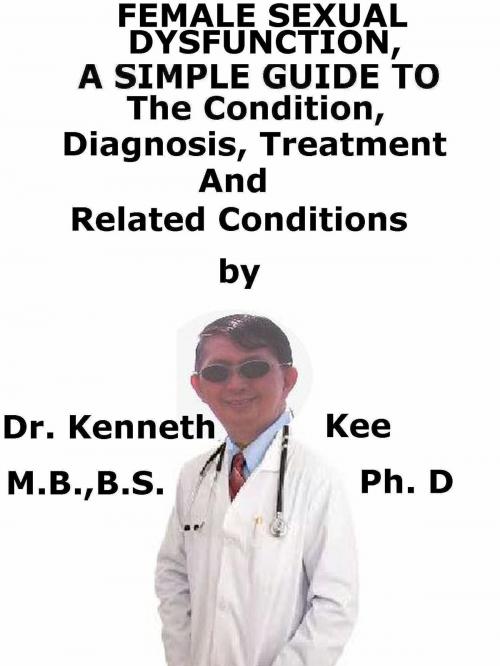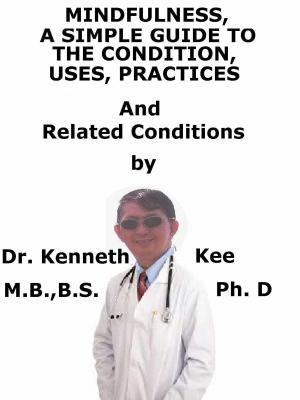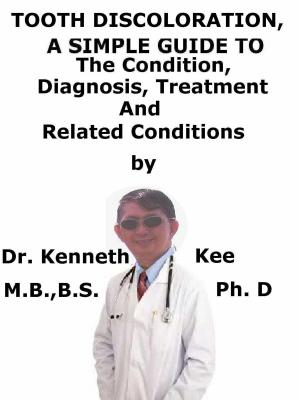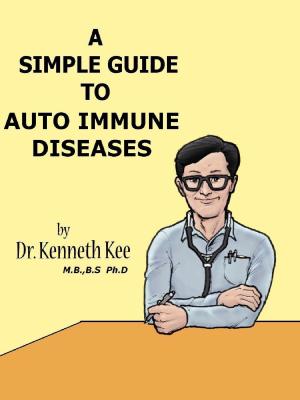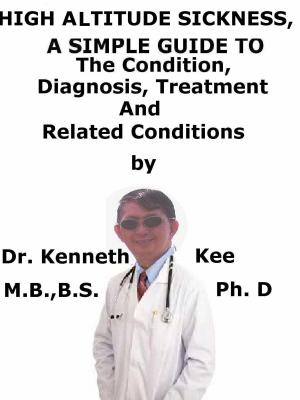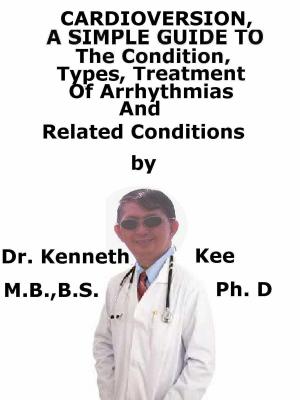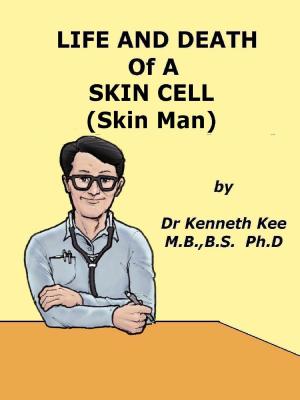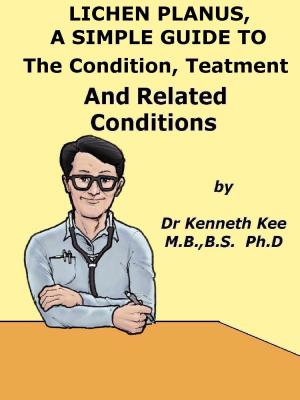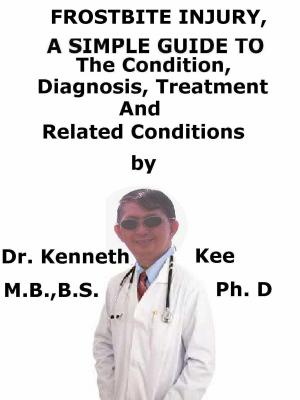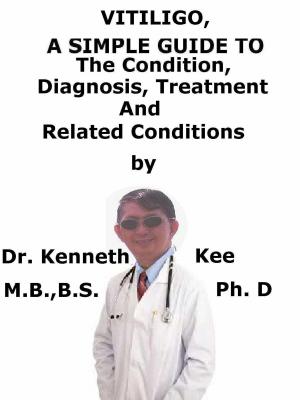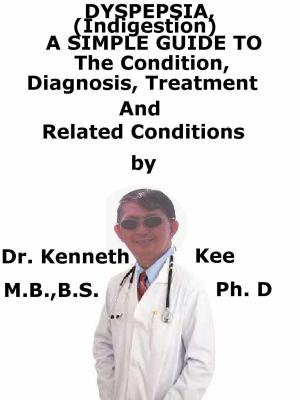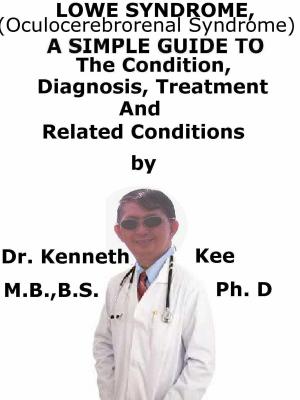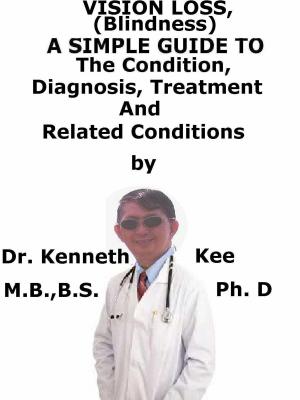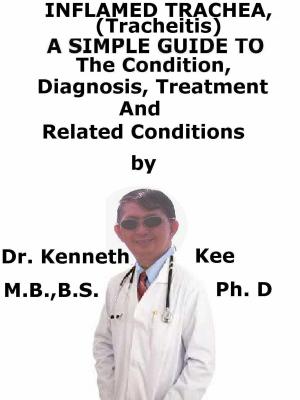Female Sexual Dysfunction, A Simple Guide To The Condition, Diagnosis, Treatment And Related Conditions
Nonfiction, Health & Well Being, Health| Author: | Kenneth Kee | ISBN: | 9781370727858 |
| Publisher: | Kenneth Kee | Publication: | October 12, 2017 |
| Imprint: | Smashwords Edition | Language: | English |
| Author: | Kenneth Kee |
| ISBN: | 9781370727858 |
| Publisher: | Kenneth Kee |
| Publication: | October 12, 2017 |
| Imprint: | Smashwords Edition |
| Language: | English |
Female sexual dysfunction (FSD) is a subjective dissatisfaction, resulting in significant distress, with the level or nature of sexual activity.
The Diagnosis and Statistical Manual of Mental Disorders fifth edition (DSM-5) categorizes FSD into three medically significant types:
For each diagnosis the disorder is experienced at least 75% of the time for at least six months (except for medication-induced FSD), resulting in significant distress.
FSD can be lifelong or acquired, and generalized or situational.
Exclusion criteria include nonsexual mental disorder, severe relationship distress (e.g., partner violence) and other significant stressors.
The three types, some or all of which may be present, are:
1. Sexual interest/arousal disorder
This is defined as reduced or absent sexual interest, responsiveness, erotic thoughts and sexual pleasure.
2. Female orgasmic disorder (absence, infrequency, reduction, delay of orgasm):
Lifelong anorgasmia may suggest unfamiliarity or discomfort with self-stimulation or sexual communication with her partner.
3. Genito-pelvic pain/penetration disorder (problem in vaginal penetration, marked vulvovaginal or pelvic pain during penetration, fear or anxiety about pain in anticipation of, during, or after penetration, and tightening or tensing of pelvic floor muscles during attempted penetration):
Many women have problems with sexual function at some point.
Female sexual dysfunction can happen at any stage of life.
It can be life-long or be acquired later in life.
It can happen only in certain sexual situations or in all sexual situations.
The sexual response cycle has four phases:
1. Excitement,
2. Plateau,
3. Orgasm, and
4. Resolution.
A sexual dysfunction indicates a problem during any phase of the sexual response cycle that prevents the patient or couple from feeling satisfaction from the sexual activity.
Causes:
Sexual dysfunction can be a result of a physical or psychological problem.
Physical:
1. Diabetes,
2. Heart disease,
3. Neurological diseases,
4. Hormonal imbalances,
5. Menopause
6. Kidney disease or
7. Liver failure, and
8. Alcoholism or drug abuse
Psychological:
1. Work-related stress and anxiety,
2. Concern about sexual performance,
3. Marital or relationship problems,
4. Depression,
5. Feelings of guilt, or
6. The effects of a past sexual trauma
Diagnosis:
An assessment of the attitudes regarding sex, and other possible contributing factors (such as fear, anxiety, past sexual trauma/abuse, relationship problems, or alcohol or drug abuse) will help the doctor comprehend the underlying cause of the problem and make proper treatment advices
Treatment:
How to Make Sex Better:
1.Get plenty of rest and eat well.
2.Limit alcohol, drugs, and smoking.
3.Feel the best.
This helps with feeling better about sex.
4.Do Kegel exercises.
Tighten and relax the pelvic muscles.
5.Focus on other sexual activities, not just intercourse.
6.Use birth control that works for both the patient and the partner.
How to Make Sex Less Painful:
1.Spend more time on foreplay.
Make sure the patient is aroused before intercourse.
2.Use a vaginal lubricant for dryness.
3.Try different positions for intercourse.
4.Empty the bladder before sex.
5.Take a warm bath to relax before sex.
Medical treatment:
Estrogen therapy
Androgen therapy
Flibanserin may increase sex drive in women who have low sexual desire and who find the experience uncomfortable.
1.Tibolone
2.Phosphodiesterase inhibitors such as Viagra
3.Phentolamine and yohimbine
4.Prostaglandin E1 (PGE1)
5.Vasoactive intestinal peptide (VIP)
6.A cardiovascular agent, candoxatril
Behavior Therapy
Sex Therapy
Healthy Lifestyle
TABLE OF CONTENT
Introduction
Chapter 1 Female Sexual Dysfunction
Chapter 2 Causes
Chapter 3 Symptoms
Chapter 4 Diagnosis
Chapter 5 Treatment
Chapter 6 Prognosis
Chapter 7 Female Orgasmic Disorder
Chapter 8 Dyspareunia
Epilogue
Female sexual dysfunction (FSD) is a subjective dissatisfaction, resulting in significant distress, with the level or nature of sexual activity.
The Diagnosis and Statistical Manual of Mental Disorders fifth edition (DSM-5) categorizes FSD into three medically significant types:
For each diagnosis the disorder is experienced at least 75% of the time for at least six months (except for medication-induced FSD), resulting in significant distress.
FSD can be lifelong or acquired, and generalized or situational.
Exclusion criteria include nonsexual mental disorder, severe relationship distress (e.g., partner violence) and other significant stressors.
The three types, some or all of which may be present, are:
1. Sexual interest/arousal disorder
This is defined as reduced or absent sexual interest, responsiveness, erotic thoughts and sexual pleasure.
2. Female orgasmic disorder (absence, infrequency, reduction, delay of orgasm):
Lifelong anorgasmia may suggest unfamiliarity or discomfort with self-stimulation or sexual communication with her partner.
3. Genito-pelvic pain/penetration disorder (problem in vaginal penetration, marked vulvovaginal or pelvic pain during penetration, fear or anxiety about pain in anticipation of, during, or after penetration, and tightening or tensing of pelvic floor muscles during attempted penetration):
Many women have problems with sexual function at some point.
Female sexual dysfunction can happen at any stage of life.
It can be life-long or be acquired later in life.
It can happen only in certain sexual situations or in all sexual situations.
The sexual response cycle has four phases:
1. Excitement,
2. Plateau,
3. Orgasm, and
4. Resolution.
A sexual dysfunction indicates a problem during any phase of the sexual response cycle that prevents the patient or couple from feeling satisfaction from the sexual activity.
Causes:
Sexual dysfunction can be a result of a physical or psychological problem.
Physical:
1. Diabetes,
2. Heart disease,
3. Neurological diseases,
4. Hormonal imbalances,
5. Menopause
6. Kidney disease or
7. Liver failure, and
8. Alcoholism or drug abuse
Psychological:
1. Work-related stress and anxiety,
2. Concern about sexual performance,
3. Marital or relationship problems,
4. Depression,
5. Feelings of guilt, or
6. The effects of a past sexual trauma
Diagnosis:
An assessment of the attitudes regarding sex, and other possible contributing factors (such as fear, anxiety, past sexual trauma/abuse, relationship problems, or alcohol or drug abuse) will help the doctor comprehend the underlying cause of the problem and make proper treatment advices
Treatment:
How to Make Sex Better:
1.Get plenty of rest and eat well.
2.Limit alcohol, drugs, and smoking.
3.Feel the best.
This helps with feeling better about sex.
4.Do Kegel exercises.
Tighten and relax the pelvic muscles.
5.Focus on other sexual activities, not just intercourse.
6.Use birth control that works for both the patient and the partner.
How to Make Sex Less Painful:
1.Spend more time on foreplay.
Make sure the patient is aroused before intercourse.
2.Use a vaginal lubricant for dryness.
3.Try different positions for intercourse.
4.Empty the bladder before sex.
5.Take a warm bath to relax before sex.
Medical treatment:
Estrogen therapy
Androgen therapy
Flibanserin may increase sex drive in women who have low sexual desire and who find the experience uncomfortable.
1.Tibolone
2.Phosphodiesterase inhibitors such as Viagra
3.Phentolamine and yohimbine
4.Prostaglandin E1 (PGE1)
5.Vasoactive intestinal peptide (VIP)
6.A cardiovascular agent, candoxatril
Behavior Therapy
Sex Therapy
Healthy Lifestyle
TABLE OF CONTENT
Introduction
Chapter 1 Female Sexual Dysfunction
Chapter 2 Causes
Chapter 3 Symptoms
Chapter 4 Diagnosis
Chapter 5 Treatment
Chapter 6 Prognosis
Chapter 7 Female Orgasmic Disorder
Chapter 8 Dyspareunia
Epilogue
